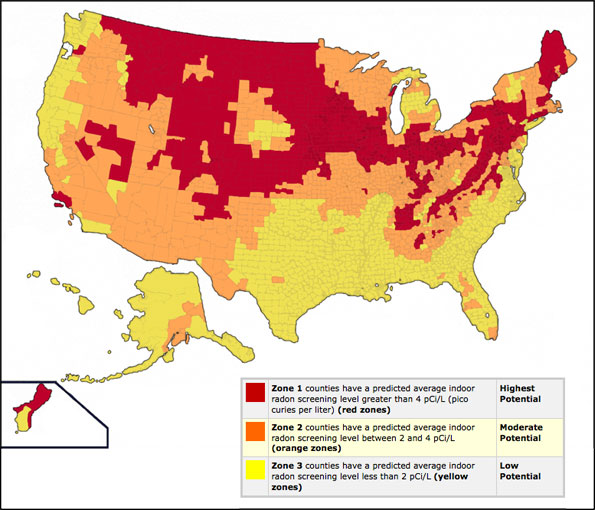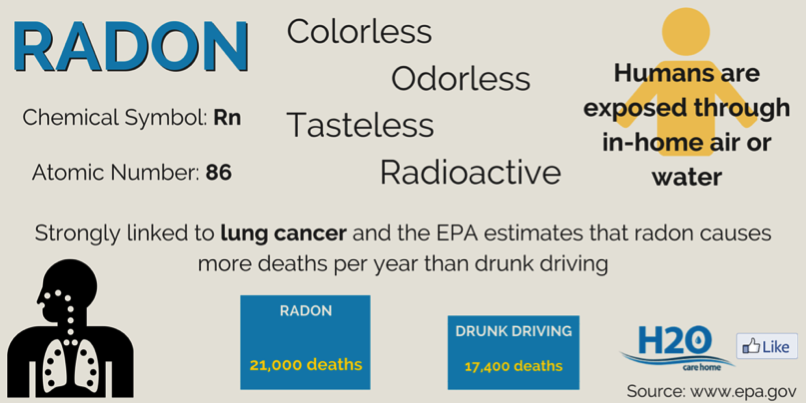If you're building a new home, ask to have it developed with radon-resistant functions. If your home has raised radon degrees, examining https://blogfreely.net/melvin0982/signified-by-the-a is the only method to understand. It's easy and cost-effective to test and find out how much radon is hiding inside your household's residence.
How long do you have to be exposed to radon before it becomes a problem?
Radon is a radioactive gas and exposure to it causes 21,000 lung cancer deaths per year—only smoking causes more. Because you can't see, smell or taste radon, it's important to periodically test the air in your home. Believing you live in a region not affected by radon is just one of the myths about this deadly gas.
Air Filtration Equipments.
The EPA as well as the National Environmental Wellness Organization have actually determined 15 types of radon test tools. Retesting is recommended in numerous circumstances such as to check test results prior to spending money on the installation of a mitigation system.
Is a radon level of 3 safe?
No, not at all. But a claim that a company can completely eliminate radon from your home should be very closely scrutinized. By definition, Radon Mitigation is any process used to reduce radon gas concentrations in the breathing zones of occupied buildings.
The range of the job depends upon the degree of gas as well as the design of your house, however it's rather easy and also not overly costly. The World Health and wellness Company advises that homeowners remediate homes with radon levels going beyond 2.7 pCi/L. The quantity of radiation gathers with time and also the filter product may reach the degree of requiring disposal as a radioactive waste.
Radon is a radioactive gas that develops naturally when uranium, thorium, or radium, which are radioactive metals damage down in rocks, dirt and groundwater. Individuals can be exposed to radon primarily from taking a breath radon in air that comes through fractures and also voids in buildings and also residences.
What causes radon?
Being exposed to radon for a long period of time can lead to lung cancer. Radon gas in the air breaks down into tiny radioactive elements (radon progeny) that can lodge in the lining of the lungs, where they can give off radiation. This radiation can damage lung cells and eventually lead to lung cancer.
You may not be able to see radon gas, however that does not make it any type of less harmful. The fact is that radon gas is approximated to cause hundreds of lung cancer deaths every year. Anything greater than 4 picocuries, or 4 pCi/L, requires action. If you obtain these outcomes, run another brief- or lasting examination to make sure.
Regarding 2,900 of these deaths happen among people who have never ever smoked. Similar to a furnace or chimney, radon decrease systems need some periodic upkeep.
How often should you test for radon?
Living pattern changes Whenever there is a change in your home, you should perform local radon testing. It's also recommended that you test your home for radon at least twice a year too. If your tests come back unusually high, then you should order one or two more tests so that you can compare the results.
- DEP sent Pennsylvania's first-place poster to the Seminar of Radiation Control Program Directors 2020 National Radon Poster Competition, as well as a national champion will certainly be revealed in January of 2020.
- Regardless of the ultimate awareness of the threats, radon-induced lung cancer in miners remained a considerable risk up until the 1970s.
- One of the most commonly utilized device for making temporary radon measurements in residences is the charcoal cylinder.
- If testing was concentrated in high-risk teams such as hefty smokers, the approximated expense of reduction after a single radon test was reduced to $ per life year conserved, a number considered to be economical.
How bad is a radon level of 8?
The EPA strongly recommends radon mitigation if your radon levels are above 4 pCi/L. While radon levels below 4 still pose a health risk. They recommend you consider mitigation if your radon levels are between 2 and 4 pCi/L. They are quick to point out that there is no known safe level of radon.
Who pays for radon mitigation buyer or seller?
There's no single method that fits all radon removal system needs. Common techniques include: Sub-slab depressurization, where suction pipes are inserted through the floor or concrete slab into the concrete slab below the home. A radon vent fan then draws out the radon gas and releases it into the air outside.
Does home insurance cover radon mitigation?
homeowners insurance and radon remediation While home insurance is designed to financially protect you from sudden and unexpected perils such as fire or theft, it typically won't cover things that can be considered related to home maintenance like radon testing and mitigation.
What are the signs of radon poisoning?
There are no safe radon levels. Any exposure to the gas, no matter radon test open windows how small, can cause damage to the DNA in your lung, the lower the levels found in your home, the lower the risk you have of developing lung cancer.
Is a radon level of 2 safe?
Radon levels are measured in picocuries per liter, or pCi/L. Levels of 4 pCi/L or higher are considered hazardous. Radon levels less than 4 pCi/L still pose a risk and in many cases can be reduced, although it is difficult to reduce levels below 2 pCi/L. Once installed, a follow-up radon test is done.
How much does it cost to run a radon fan?
Known risk factors for lung cancer include: Risk by age: About two out of three lung cancers are diagnosed in people over age 65, and most people are older than 45. The average age at diagnosis is 71. Family history: Genetics may predispose certain people to lung cancer.
Is it hard to sell a house with radon?
Fortunately, it's not hard to sell a house with radon, provided that you alert potential buyers and mitigate the problem, say Brian Thomas, a top real estate agent in the Denver, Colorado area, with 16 years of experience. “For as much fear and uncertainty as radon causes, there's an easy fix.”
Where is radon found in the home?
Radon is a radioactive gas that has been found in homes all over the United States. It comes from the natural breakdown of uranium in soil, rock, and water and gets into the air you breathe. Radon typically moves up through the ground to the air above and into your home through cracks and other holes in the foundation.
Do all homes have some level of radon?

The EPA estimates the lifetime risk of radon-induced lung cancer for never-smokers at 7 per 1,000 people, compared with 62 per 1,000 for smokers exposed to a level of 4 pCi/L. Your risk goes up with your exposure to radon and cigarette smoke over time.
Can I install my own radon mitigation system?
In most cases, pros charge about $1,500 to install a radon mitigation system, but you can do it yourself for only about $500 in materials. So if you're fairly handy and have some carpentry, plumbing and electrical skills, you can install your what is radon poisoning own system in a weekend and save yourself a thousand bucks!
Will opening windows reduce radon?

Opening windows improves air circulation and ventilation, helping move radon out of the house and mixing radon-free outside air with indoor air. Opening basement windows helps reduce negative air pressure, diluting radon with clean outdoor air.
How do I know if my house has radon?
In fact, you're probably breathing it in every day, even if it's at a low level. However, you can't tell if you're breathing it in at a high level. The danger in radon exposure is that you can't see it, taste it, or smell it. And you won't have any symptoms to alert you.